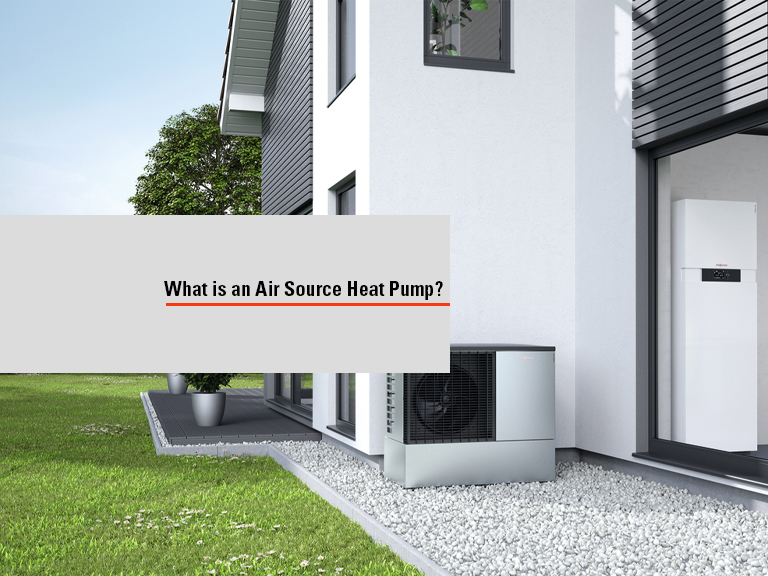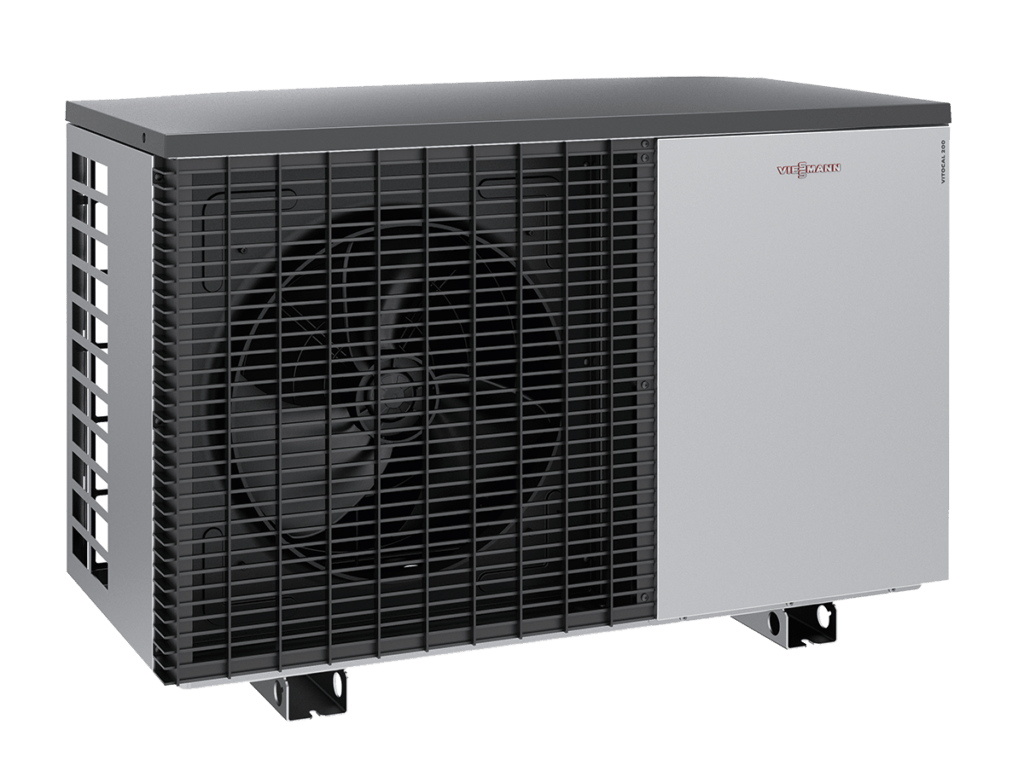
What is an air source heat pump?
An air-source heat pump is an efficient and eco-friendly way of heating your home without the need for a traditional gas or electric heating system. If you want to reduce your current heating bills while doing your bit for the environment, then read on to find out how you can achieve this with an air source heat pump.

How do Air Source Heat Pumps work?
An air-source heat pump works by transferring heat from the outside air to an indoor space. A fan draws in air from outside and transfers it to an evaporator, which is situated in the heat pump. A refrigerant circulates inside the pump, which changes its physical state and evaporates even at low temperatures. The refrigerant steam needs to be raised to a level where it can be used for your heating and hot water, so it’s compressed using a compressor. The heat produced in this process is transferred to the heating and hot water systems in your home. Which? has created a handy illustration that demonstrates how the pump works.
The pump uses electricity to run, but it should use less energy than the heat the pump produces. If you want to make your home even more eco-friendly, you could install solar panels to run the air source heat pump. This will help you to reduce your energy bills and your carbon footprint.
An air-source heat pump can generate heat even when the temperature outside is as low as -15°C, so homes in Ireland will benefit from this type of heating system throughout the year. They tend to have a longer lifespan than a typical boiler and should only need to be replaced every 20 years or so.
Are air source heat pumps effective?
Air source heat pumps can be effective if your home suits this kind of technology.
Home insulation can make a huge difference in the effectiveness of your heat pump. A well-insulated house requires one kW of heat for every 25m2, but a badly insulated house will only heat 10m2 per kW of heat. This means that a house with poor insulation could require two and a half times more energy to heat it.
To get the most from your air source heat pump, your home should have good insulation and large radiators and/or underfloor heating. Windows should be double glazed and you should invest in draught excluders to make sure you’re keeping as much heat in your home as possible.
Pumps are more versatile than boilers as they can be powered by wind energy or solar power to save you more money. They can heat hot water for immediate or later use and require very little maintenance to keep them performing at their best. They’re an excellent choice for people who want to reduce their home’s ecological footprint or are looking to modernise their home.
What size air source heat pump do I need?
Pump sizes range from 6kW to 15kW. The size you need depends on a range of factors, including:
- Outdoor design temperature
- Desired room temperature
- Flow temperature
The outdoor design temperature is the average temperature outside so this is dependent on where you live. It’s usually based on the coldest temperature of the year in your area.
The desired room temperature is the temperature you, the homeowner, would prefer. 21°C is a popular home temperature, but if you want your home cooler than this, you could have a smaller pump.
The flow temperature comes down to the size of your radiators and the standard of your home insulation. If your radiators are too small, the flow temperature will need to be higher.
Your installer should be able to tell you what size air source heat pump you need. They can do this using specialist design calculation software that determines the pump size needed to match the heat demand. If a pump is too big, it’ll short cycle all the time. If it’s too small, it’ll use the backup heater too often to keep the heat at a constant level. Both of these issues could cost you more in the long term.
How noisy are air source heat pumps?
Depending on the system and the quality of the installation, your air source heat pump should produce around 40 to 60 dB of noise. A computer is around 40 dB and a refrigerator is around 50 dB, so pumps are not very loud. The noise you’ll be able to hear coming from your pump could be either the fan or the compressor. Some heat pumps may have advanced acoustic design which will help to minimise noise.
You should weigh up all the options involved when choosing an air source heat pump. There are lots of things to think about, including who will install it, whether it will be more cost-effective than your current system, how much noise it will make and whether you have to make any other home improvements to get the most out of your new pump. We hope that we’ve answered these questions and more for you in this post.
How much does an air source heat pump cost?
The cost of an air source heat pump could depend on a number of factors, including the size of your house.
A heat pump will generally cost around €8,000 to €12,000 but, once installed, you should see a drop in your bills and the pump won’t need to be replaced as soon as a boiler would.
A further cost that you may have to factor in is additional home insulation. Air source heat pumps will work much more efficiently if your home is able to maintain the heat that the pump produces. This might mean upgrading your current home insulation to ensure your pump is heating your property as efficiently as possible.
Below information is provided by SEAI
SEAI Heat pump system grant values
| Energy Upgrades | Grant Value |
|---|---|
| Heat Pump Systems | |
| Air to Water | €3,500 |
| Ground Source to Water | €3,500 |
| Exhaust Air to Water | €3,500 |
| Water to Water | €3,500 |
| Air to Air | €600 |
Do more, receive more
If you complete three upgrades your grant value will be increased by €300. If you complete four upgrades your grant value will be increased by an additional €100. A total of €400.
Heat pump system types
Air source
The most common heat pump systems extract heat from external air, typically using an outside unit. These heat pump systems do not require underground piping to source heat and so can be cheaper and easier to install compared to ground source heat pump systems. The most popular heat pumps are air to water heat pumps.
Ground source
A ground-source heat pump system uses the earth as a source of renewable heat. Heat is removed from the ground through collector pipework and then transferred to the heat pump. The ground collector can be laid out horizontally at a shallow depth below the surface or else vertically to a greater depth.
Water source
Water source heat pump systems use open water, such as lakes, rivers or streams, as a heat source. Heat is removed from the water through collector pipework and then transferred to the heat pump.
Ensuring your home is heat pump ready
One of the requirements for a dwelling to qualify for a heat pump system grant is that the dwelling has low heat loss. This is to ensure your heat pump system performs well and your electricity bills are not too high. You can achieve this by insulating your home and/or by upgrading your windows. Note: SEAI also offers grants for home insulation.
Before you apply
Before applying for a heat pump system grant, you must engage an independent, SEAI Registered Technical Advisor. Your Technical Advisor will carry out a technical assessment of your home, and will advise you on what steps to take to make your home “heat pump ready”, i.e. to reduce the heat loss in your home.
They will provide you with independent guidance on measures necessary to ensure that the dwelling fabric heat loss is lowered to an acceptable level for a heat pump system to perform effectively and efficiently. The required heat loss level is expressed as a Heat Loss Indicator of 2 Watts/Kelvin/m2. In some cases, where upgrades may not be cost-optimal, a value of HLI up to 2.3 Watts/Kelvin/m2 can be accepted provided additional requirements are met. Full details of these requirements can be found in the SEAI Domestic Technical Standards and Specification and should be discussed with your Technical Advisor.
Grant for technical assessment
We offer a €200 grant towards the technical assessment of your home, with this grant only payable in conjunction with the heat pump system grant. To qualify for this funding you must choose your Technical Advisor from the list of SEAI registered Technical Advisors, and complete the heat pump system and any upgrades required according to the programme rules.
Please note that uninsulated homes built more than 30 years ago may require substantial and costly upgrades to qualify for a heat pump system grant.
Who can apply
All homeowners, including landlords, whose homes were built and occupied before 2011 can apply. This is defined as the date your electricity meter was installed. Note that this is different to other grant measures where the home must be built before 2006.
How to apply
- Find out more about how you can apply for a home energy grant
- Ready to apply? Start your application online
Timeframe
You must complete the works and submit the paperwork within 8 months from the date of the grant offer. You can find the expiry date in your offer letter.
Free upgrades for eligible homes
If your home was built and occupied before 2006 and you are in receipt of social welfare payments, you may be eligible for free energy efficiency improvements.
Air source heat pumps by Viessmann
View our Heat Pump Product Range from Viessmann. If you have your plans ready you can upload them here to size your heat pump.




